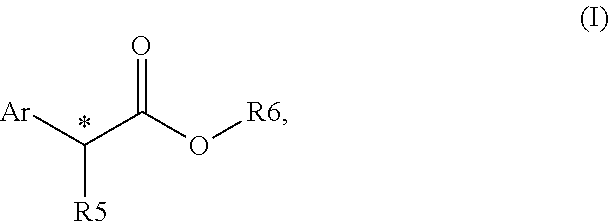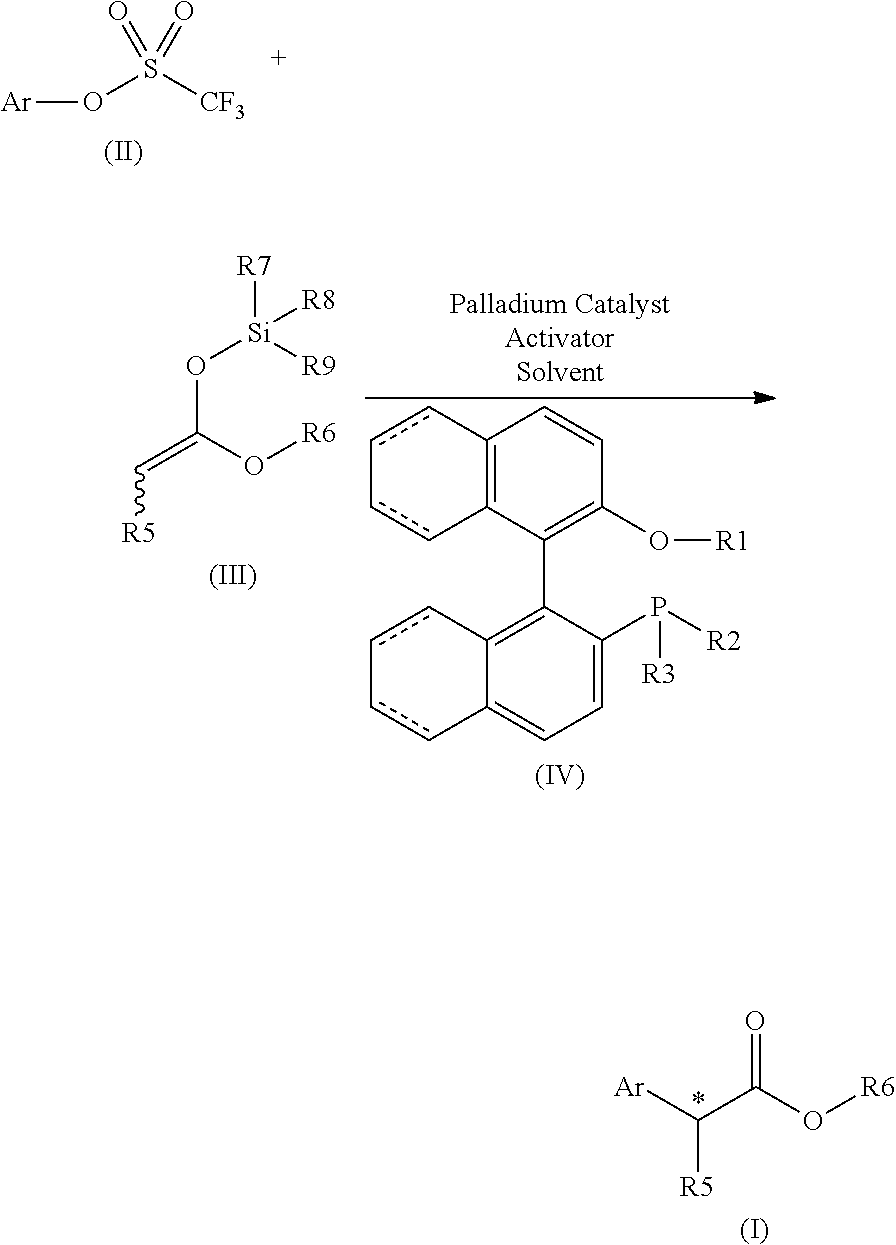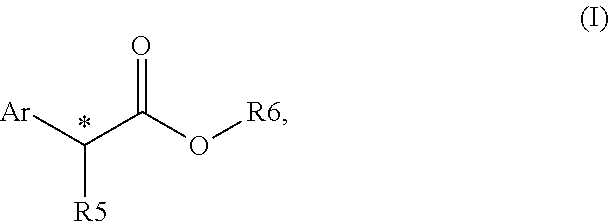Chiral phosphines for palladium-catalyzed asymmetric alpha-arylation of ester enolates to produce tertiary stereocenters in high enantioselectivity
a technology of chiral phosphine and ester enolate, which is applied in the field of transition metal catalyzed, asymmetric arylation of ester enolates to produce tertiary stereocenters in high enantioselectivity, can solve the problems of limited success in aryl electrophiles, aryl-metal reagents or aryl electrophiles, and successful examples of this kind with excellen
- Summary
- Abstract
- Description
- Claims
- Application Information
AI Technical Summary
Benefits of technology
Problems solved by technology
Method used
Image
Examples
examples
[0096]The following examples are provided in order to demonstrate and further illustrate certain preferred embodiments and aspects of the present invention and are not to be construed as limiting the scope thereof.
[0097]General Information
[0098]1H NMR spectra were acquired at 0.400 MHz or 300 MHz and chemical shifts were recorded relative to SiMe4 (δ 0.00) or residual protiated solvents (CDCl3: δ7.26; C6D6: δ7.16). Multiplicities were given as: s (singlet), d (doublet), t (triplet), q (quartet) and m (multiplet). The number of protons (n) for a given resonance was indicated by nH. Coupling constants were reported as a J value in Hz. 13C NMR spectra were obtained at 100 MHz on 400 MHz or 75 MHz on 300 MHz instruments and chemical shifts were recorded relative to solvent resonance (CDCl3: δ 77.23; C6D6: δ 128.0). Proof of purity of new compounds was demonstrated with copies of 1H, 13C, 31P and 19F NMR spectra.
[0099]Glassware was dried at 120° C. for at least 3 hours before use. Anhydr...
PUM
| Property | Measurement | Unit |
|---|---|---|
| enantiomeric excess | aaaaa | aaaaa |
| enantiomeric excess | aaaaa | aaaaa |
| enantiomeric excess | aaaaa | aaaaa |
Abstract
Description
Claims
Application Information
 Login to View More
Login to View More - R&D
- Intellectual Property
- Life Sciences
- Materials
- Tech Scout
- Unparalleled Data Quality
- Higher Quality Content
- 60% Fewer Hallucinations
Browse by: Latest US Patents, China's latest patents, Technical Efficacy Thesaurus, Application Domain, Technology Topic, Popular Technical Reports.
© 2025 PatSnap. All rights reserved.Legal|Privacy policy|Modern Slavery Act Transparency Statement|Sitemap|About US| Contact US: help@patsnap.com



